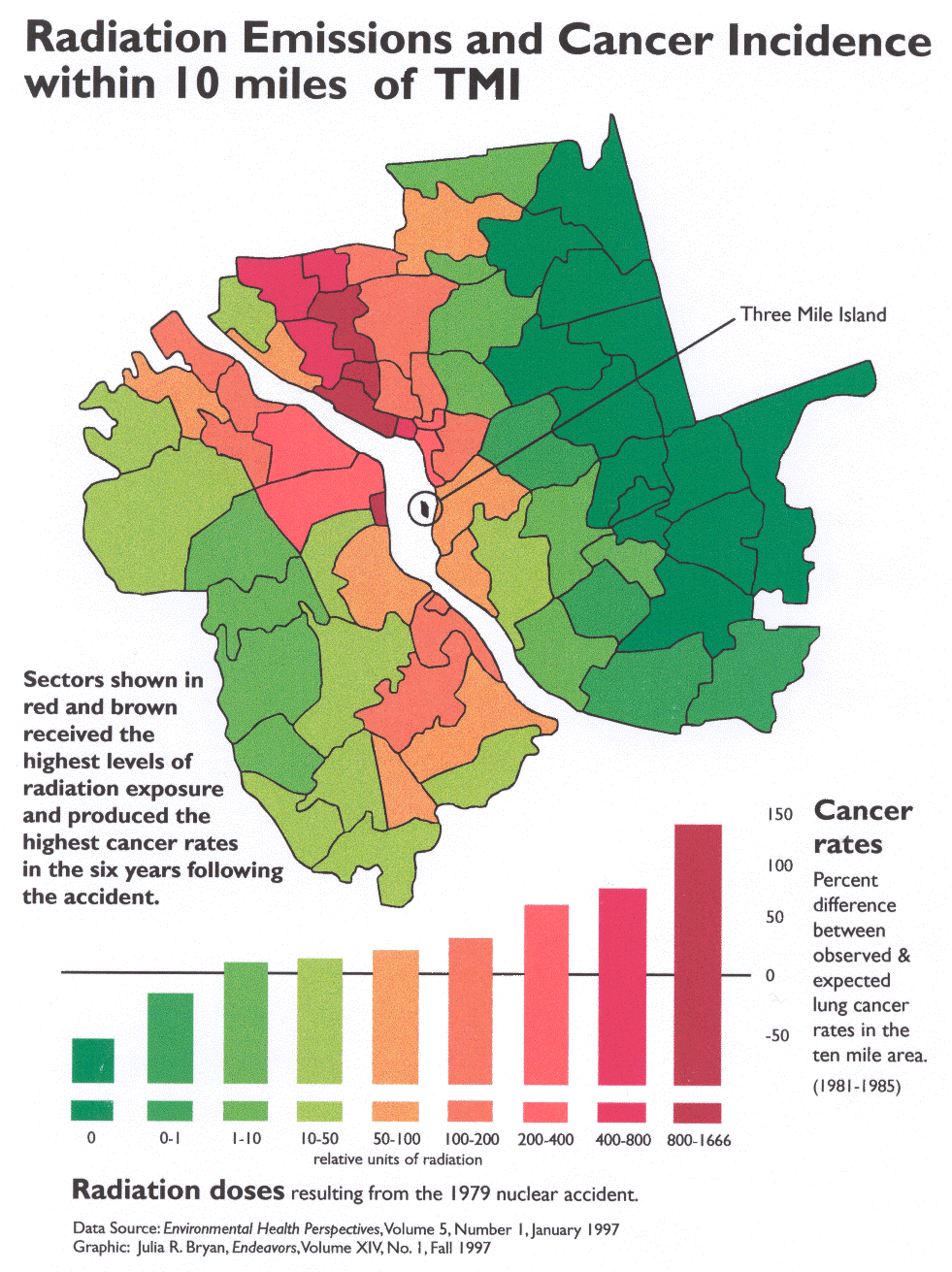| By Sue Sturgis, Facing South. Posted April 3, 2009.
A growing body of personal and scientific evidence contradicts the official story that the accident posed no threat to the public. This story originally appeared on Facing South, online magazine of the Institute for Southern Studies. Une image extraite (500Ko): 
Map showing increases in cancer rates in the TMI area after the disaster courtesy of Dr. Steve Wing; graph showing dramatic spike in pressure inside the TMI containment on March 28, 1979 courtesy of Arnie Gundersen. It was April Fool's Day, 1979 -- 30 years ago this week -- when Randall Thompson first set foot inside the Three Mile Island nuclear power plant near Middletown, Pa. Just four days earlier, in the early morning hours of March 28, a relatively minor problem in the plant's Unit 2 reactor sparked a series of mishaps that led to the meltdown of almost half the uranium fuel and uncontrolled releases of radiation into the air and surrounding Susquehanna River. |
It was the single worst disaster ever to befall
the U.S. nuclear power industry, and Thompson was hired as a health physics
technician to go inside the plant and find out how dangerous the situation
was. He spent 28 days monitoring radiation releases.
Today, his story about what he witnessed at Three Mile Island is being brought to the public in detail for the first time -- and his version of what happened during that time, supported by a growing body of other scientific evidence, contradicts the official U.S. government story that the Three Mile Island accident posed no threat to the public. "What happened at TMI was a whole lot worse than what has been reported," Randall Thompson told Facing South. "Hundreds of times worse." Thompson and his wife, Joy, a nuclear health physicist who also worked at TMI in the disaster's aftermath, claim that what they witnessed there was a public health tragedy. The Thompsons also warn that the government's failure to acknowledge the full scope of the disaster is leading officials to underestimate the risks posed by a new generation of nuclear power plants. While new reactor construction ground to a halt after the 1979 incident, state leaders and energy executives today are pushing for a nuclear energy revival that's centered in the South, where 12 of the 17 facilities seeking new reactors are located. Fundamental to the industry's case for expansion is the claim that history proves nuclear power is clean and safe -- a claim on which the Thompsons and others, bolstered by startling new evidence, are casting doubt. Chapitres:
|